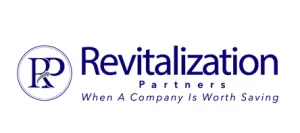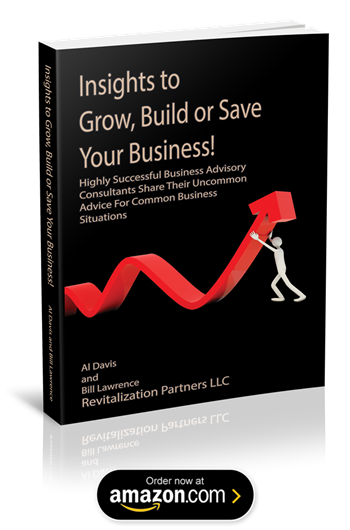Revitalization Partners – Executive Brief | October 2025
“There are some really significant changes happening in the Asset Based Lending market related to the increase in tariffs. Most notably a reduction in inventory advance rates and adding language to loan documents reflecting some large tariff increases as a material adverse change event.”
— Bill Lawrence, Principal, Revitalization Partners
 Tariffs have evolved from a macroeconomic policy issue to a core driver of liquidity, valuation, and credit structure for middle-market lending. The disruptions reported in recent industry commentary echo what we’re seeing in diligence and portfolio reviews: working capital demands are surging, credit structures are morphing, and borrower resilience is being tested.
Tariffs have evolved from a macroeconomic policy issue to a core driver of liquidity, valuation, and credit structure for middle-market lending. The disruptions reported in recent industry commentary echo what we’re seeing in diligence and portfolio reviews: working capital demands are surging, credit structures are morphing, and borrower resilience is being tested.
Below are five key considerations—refreshed in light of recent market shifts—for lenders and sponsors navigating this evolving landscape.
1. Collateral Valuation Under Strain
Tariffs inflate landed costs but don’t guarantee corresponding increases in market demand or resale value. As a result, book inventory values can diverge sharply from realizable values.
 Recent reports suggest the tariff-driven working capital surge is disproportionately pressuring import-heavy borrowers, forcing more frequent reappraisals and tighter scrutiny of net orderly liquidation values (NOLVs).
Recent reports suggest the tariff-driven working capital surge is disproportionately pressuring import-heavy borrowers, forcing more frequent reappraisals and tighter scrutiny of net orderly liquidation values (NOLVs).
What to do:
-
Re-anchor collateral bases to net realizable value, not inflated cost bases.
-
Add tariff sensitivity overlays to valuation models (e.g., ±10–50% duty scenarios).
-
Increase field exam cadence for high-risk sectors or goods with narrow resale margins.
2. Advance Rate Compression & Credit Tailoring
What Bill Lawrence flagged—reductions in inventory advance rates—is playing out broadly: lenders are pulling back 5–10 points, and in some cases excluding certain import-sensitive categories altogether.
Compounding this, the ABF Journal piece notes that working capital “surges” caused by tariffs are pushing borrowers to draw more, thereby stressing borrowing bases and liquidity structures.
Best practices:
-
Segment collateral by domestic vs. imported, and apply tiered advance rates accordingly.
-
Impose concentration caps on tariff-exposed inventories.
-
Refresh availability calculations more frequently—monthly rather than quarterly.
3. Evolving Credit Documents & “Soft” Defaults
 Tariff risk is being baked into credit docs. Lenders are now defining tariff spikes as Material Adverse Change (MAC) events, giving them latitude to reserve, restrict, or even call defaults. (As Bill Lawrence put it, adding such language is one of the noticeable shifts in the market.)
Tariff risk is being baked into credit docs. Lenders are now defining tariff spikes as Material Adverse Change (MAC) events, giving them latitude to reserve, restrict, or even call defaults. (As Bill Lawrence put it, adding such language is one of the noticeable shifts in the market.)
In other words: external policy moves are being internalized into borrower risk profiles.
Key actions:
-
Carefully review MAC and force-majeure clauses—and where possible, renegotiate thresholds (e.g. >20% duty jump).
-
Insist on precision in tariff language, distinguishing between sector-wide shifts and idiosyncratic impacts.
-
Evaluate operational covenants (inventory turns, working capital cushions) that serve as early warning triggers.
4. Escalating Working Capital Pressure & Eroding Margins
Tariff surcharges are compressing gross margins, stretching payables, and pushing borrowers to lean harder on credit facilities. At the same time, lenders are pulling back availability, creating a squeeze.
The ABF Journal article underscores that middle-market borrowers are increasingly seeing credit structures reshaped by rising working capital needs—credit lines must flex to absorb surges, yet the capital base is under strain.
Tactical responses:
-
Model tariff-stress scenarios: 10%, 25%, 50% duty escalations, and their effects on liquidity.
-
Secure forward-looking liquidity lines or alternative backup credit facilities before stress hits.
-
Drive inventory turns, shift to just-in-time replenishment, or tighten receivables to free up working capital.
5. Supply Chain & Sourcing Strategy as Risk Mitigation
 The only durable defense is structural: rethinking where and how goods are sourced. Whether reshoring, nearshoring, or diversifying supplier relationships, the transition may be capital-intensive—but the payoff is lower exposure to tariff shocks.
The only durable defense is structural: rethinking where and how goods are sourced. Whether reshoring, nearshoring, or diversifying supplier relationships, the transition may be capital-intensive—but the payoff is lower exposure to tariff shocks.
As the ABF Journal article suggests, credit sponsors and lenders keenly evaluate a borrower’s supply-chain agility in their diligence process. Those with nimble sourcing and transparent supplier relationships are already emerging as preferred credits.
Strategic steps:
-
Embed resilience reviews into diligence processes.
-
Assess management’s readiness and supplier diversification plans.
-
Tilt favor toward borrowers with flexible, transparent supply networks that can pivot with shifting trade policy.
Conclusion
The tariff era isn’t a passing policy cycle—it’s redefining credit fundamentals. As Bill Lawrence noted, the marketplace is undergoing substantive change: from lower advance rates to tariff-specific default triggers. Credit professionals must now treat tariff exposure not as a macro footnote, but as a capital driver.
Success in this environment depends on:
-
Collateral control through frequent reappraisals and scenario modeling
-
Lending structure discipline via tiered advance rates and dynamic reserves
-
Legal clarity with precise MAC/force majeure drafting
-
Liquidity resilience via modeling and fallback lines
-
Strategic agility through supply-chain redesign
In volatile times, anticipation and clarity are your best hedges. Let me know if you’d like a layout version or a version customized for your clients or newsletter.


